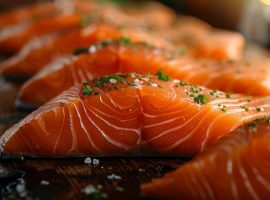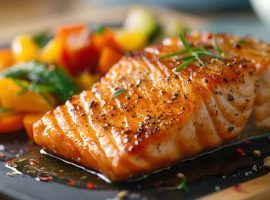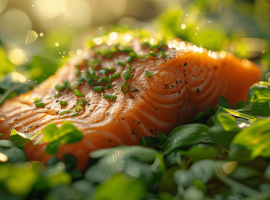Omega-3 Fatty Acids: A Key to Managing Hypertension
Omega-3 fatty acids are essential fats found in various types of fish, known for their beneficial effects on blood pressure and overall cardiovascular health. These polyunsaturated fats are crucial for the body’s normal functions, including regulating blood clotting and building cell membranes in the brain.
The Impact of Omega-3s on Blood Pressure
Research has consistently shown that omega-3 fatty acids can help lower blood pressure levels, an essential factor in the prevention and management of hypertension. They aid in dilating blood vessels, reducing inflammation, and improving arterial function, which collectively contribute to cardiovascular health.
Rich Sources of Omega-3 for Hypertension Control
For those seeking to control hypertension through diet, certain fish stand out as rich sources of omega-3 fatty acids. Salmon, mackerel, sardines, and tuna are particularly beneficial, offering high levels of these fats that can aid in managing high blood pressure.
Scientific Evidence Supporting Omega-3s in Cardiovascular Health
Numerous studies support the role of omega-3 fatty acids in promoting heart health. For instance, the American Heart Association recommends eating fish at least twice a week, particularly fatty fish, to harness the cardiovascular benefits of omega-3s. This dietary choice is associated with a lower risk of heart disease and stroke, underscoring the importance of including omega-3-rich fish in a heart-healthy diet.
Identifying Fish Varieties High in Omega-3s
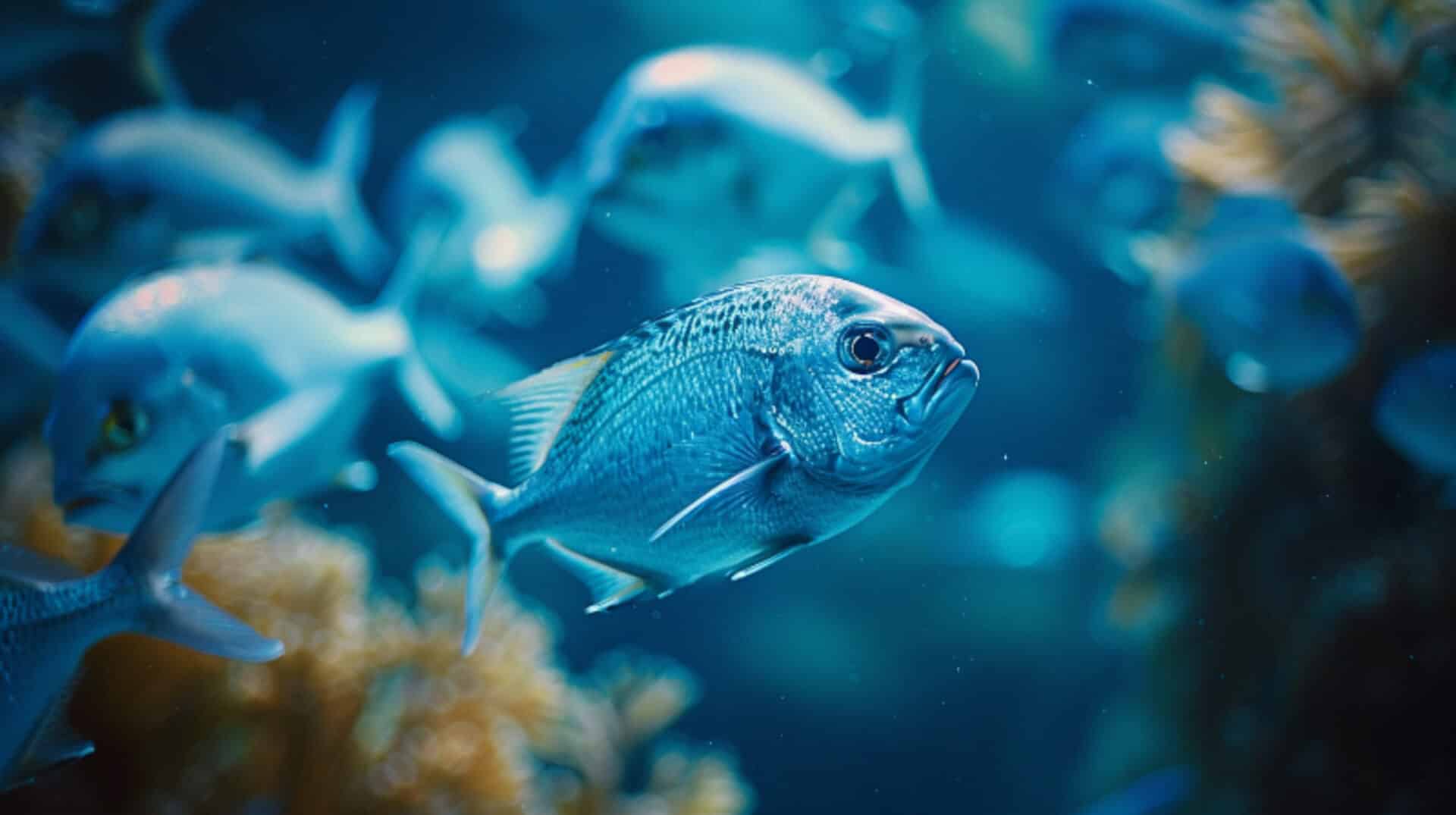
When selecting fish for their omega-3 content, certain varieties stand out. Salmon, mackerel, sardines, and herring are renowned for their high levels of these beneficial fatty acids. These fish not only contribute to a heart-healthy diet but are also pivotal in managing and preventing hypertension.
Omega-3 Levels in Popular Fish Varieties
Salmon, particularly wild-caught Alaskan salmon, is often highlighted for its omega-3 richness. Mackerel, especially Atlantic and Spanish varieties, also boasts significant omega-3 content. Herring and sardines, smaller oily fish, are not only abundant in omega-3s but are also typically lower in mercury, making them a safer choice for regular consumption.
Wild-Caught vs. Farmed Fish Omega-3 Content
The debate between wild-caught and farmed fish centres on their nutritional value. Wild-caught fish are generally preferred for their natural diet, which leads to higher omega-3 levels. However, some farmed fish, like salmon, can still be a good source of omega-3s if they are raised on a diet that includes marine-based feed.
Ensuring High Omega-3 Intake
To ensure you’re selecting fish with the highest omega-3 benefits, look for certifications indicating sustainable and responsible farming practices. Checking for a fish’s origin and the type of feed used in aquaculture can also guide you towards healthier choices. For those who prefer wild-caught options, seasonal availability can reflect when fish have higher omega-3 levels due to their natural feeding patterns.
Recommended Fish Consumption for Hypertension Management

To effectively manage hypertension, incorporating fish into your diet is advised. The American Heart Association recommends eating two servings of fatty fish per week. This frequency is associated with a reduced risk of cardiovascular events, as the omega-3 fatty acids in fish are known to lower blood pressure and improve heart health.
Optimal Serving Sizes for Hypertensive Individuals
For those managing hypertension, serving sizes matter. A standard serving size is considered to be 3.5 ounces of cooked fish, or about 3/4 cup of flaked fish. Sticking to these portions ensures you receive the benefits of omega-3s without excessive calorie intake.
Balancing Omega-3 Intake
While omega-3 fatty acids are beneficial, there can be diminishing returns at higher consumption levels. Excessive intake does not provide additional benefits and may contribute to unnecessary calorie consumption. It’s important to balance omega-3 intake with other nutrients as part of a comprehensive diet plan.
Role of Portion Control in a Balanced Diet
Portion control is essential in a balanced diet for hypertension patients. It ensures that the intake of fish contributes to overall nutrient requirements without leading to overconsumption. Regularly consuming the recommended servings of fish, as part of a diet rich in fruits, vegetables, and whole grains, can aid in maintaining a healthy blood pressure level.
Healthiest Cooking Methods for Omega-3 Rich Fish
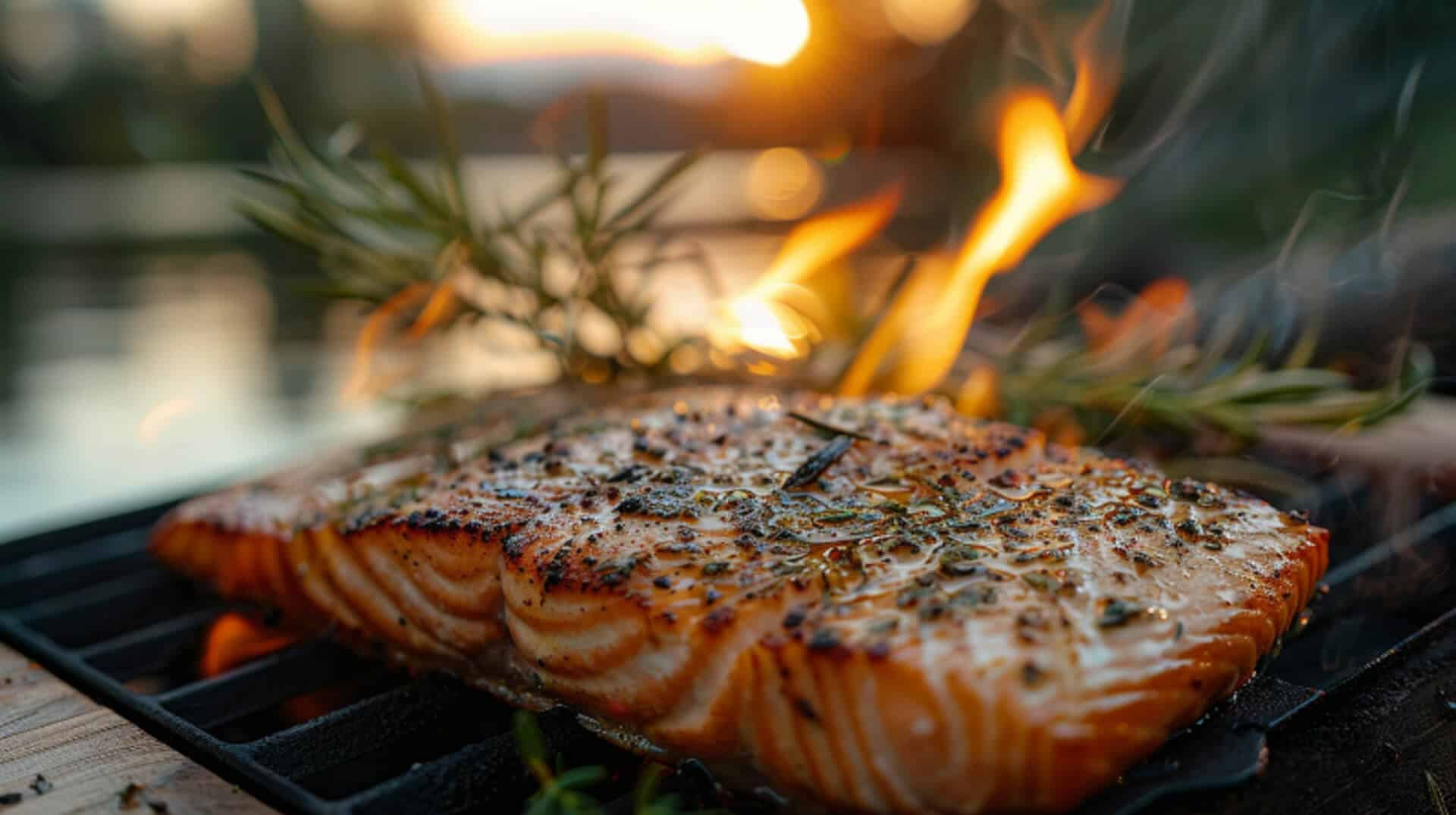
Maximising the health benefits of fish, particularly for hypertension control, involves careful consideration of cooking methods. The goal is to preserve the integrity of omega-3 fatty acids while enhancing the flavour.
Impact of Cooking Techniques on Omega-3 Content
- Grilling: Quick and high-heat grilling can preserve omega-3 content but may form harmful compounds if charred. It’s advisable to grill fish on a cedar plank to avoid direct flame contact.
- Baking: This method is excellent for even cooking and retaining moisture without adding extra fat, thus maintaining the omega-3 levels.
- Steaming: Steaming fish is one of the best methods to preserve omega-3 fatty acids and other nutrients, as it requires no added fat and minimises the risk of overcooking.
Cooking Practices to Avoid
To maintain the cardiovascular benefits of fish, avoid deep-frying or using unhealthy fats. These methods can add unnecessary calories and potentially reduce the positive effects of omega-3s.
Enhancing Cardiovascular Benefits with Seasonings
Incorporating certain seasonings and marinades can enhance the cardiovascular benefits of fish. For instance, adding garlic may contribute to the anti-inflammatory and vasodilatory effects, while herbs like rosemary can add flavour without sodium, which is beneficial for blood pressure management.
Assessing Mercury Risks in Fish Consumption

Mercury exposure from fish consumption is a valid concern, particularly for individuals managing hypertension. High levels of mercury can negate the benefits of omega-3 fatty acids by contributing to cardiovascular issues.
Fish Varieties with Lower Mercury Levels
For safer regular consumption, certain fish are recommended due to their lower mercury content:
- Salmon: Both wild-caught and farmed salmon have low mercury levels.
- Sardines: Small in size, sardines have minimal mercury accumulation.
- Trout: Freshwater trout, especially farmed varieties, are typically low in mercury.
EPA and FDA Guidelines for Fish Selection
The Environmental Protection Agency (EPA) and Food and Drug Administration (FDA) provide advisories to help you select fish with lower mercury levels:
- Choose smaller fish: Smaller species tend to accumulate less mercury.
- Check local advisories: For locally caught fish, refer to regional guidelines on mercury content.
- Limit consumption of high-mercury fish: Species like shark, swordfish, and mackerel king should be consumed less frequently.
Strategies to Balance Omega-3 Intake and Mercury Exposure
To balance the benefits of omega-3s with mercury risks, consider the following:
- Diversify seafood choices: Rotate between different types of low-mercury fish.
- Moderate consumption: Follow recommended serving sizes and frequency.
- Consider supplements: If concerned about mercury, high-quality fish oil supplements can be an alternative source of omega-3s.
Sustainable Fishing and Its Impact on Health

Sustainable fishing practices are not only crucial for environmental conservation but also play a significant role in ensuring the health benefits of fish. When fish are sourced from well-managed stocks, they are more likely to have been raised or caught in environments that support their natural growth and nutrient development, which is essential for those managing hypertension.
Choosing Fish from Well-Managed Stocks
Selecting fish from well-managed stocks is vital for hypertension control for several reasons:
- Nutrient Preservation: Sustainable practices often result in better quality fish with higher levels of omega-3 fatty acids.
- Contaminant Reduction: Responsibly managed fisheries are less likely to have high levels of pollutants, such as mercury, which can affect cardiovascular health.
Frozen Fish Direct’s Commitment to Quality
Frozen Fish Direct ensures the provision of high-quality, sustainably sourced fish by:
- Sourcing Transparency: They provide clear information about the origins of their fish and the methods used to catch or raise them.
- Quality Control: Their process includes rigorous checks to ensure that the fish retain their nutrients and are free from harmful contaminants.
Environmental Impacts of Unsustainable Fishing
Unsustainable fishing practices can lead to:
- Ecosystem Damage: Overfishing and harmful methods can destroy habitats, affecting the health of fish populations.
- Consumer Safety Risks: Fish from depleted or damaged ecosystems may have lower nutritional value and higher levels of toxins, posing risks to consumers.
Incorporating Fish into a Heart-Healthy Diet

Incorporating fish into a diet can be a strategic move for managing hypertension. Fish rich in omega-3 fatty acids, such as salmon, mackerel, and sardines, are known to support cardiovascular health.
Aligning Fish Consumption with Dietary Patterns
For those with hypertension, aligning fish consumption with specific dietary patterns can amplify health benefits:
- Mediterranean Diet: Emphasises fish, fruits, vegetables, whole grains, and healthy fats.
- DASH Diet: Includes fish as a part of a varied diet focused on reducing sodium and increasing nutrient-rich foods to lower blood pressure.
DASH Diet’s Approach to Fish
The DASH diet, or Dietary Approaches to Stop Hypertension, specifically incorporates fish as a source of lean protein and omega-3 fatty acids, which are instrumental in reducing blood pressure. It recommends:
- Fish Servings: At least two servings of fatty fish per week.
- Preparation: Baking or grilling fish to avoid adding unhealthy fats.
Complementary Foods in a Heart-Healthy Diet
To complement the benefits of fish, include:
- Fruits and Vegetables: High in potassium, which can help manage blood pressure.
- Whole Grains: For fibre and nutrients.
- Nuts and Legumes: Additional sources of protein and fibre.
Creating a Balanced Meal Plan
Individuals with hypertension can create a balanced meal plan by:
- Variety: Including different types of fish and seafood.
- Moderation: Watching portion sizes to maintain a balanced intake.
- Consistency: Regularly incorporating fish into meals to sustain nutrient levels.
American Heart Association’s Fish Intake Recommendations
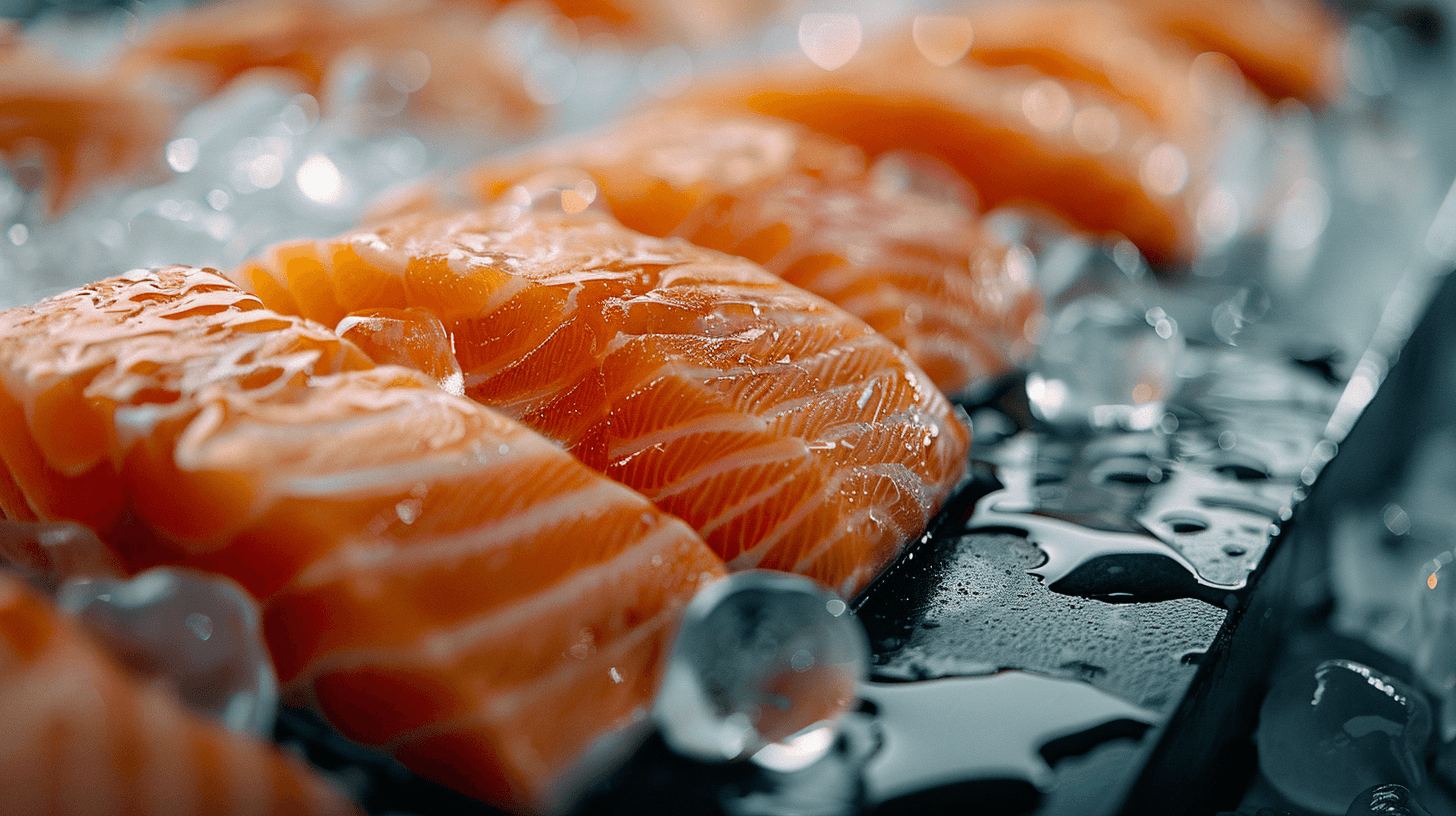
The American Heart Association (AHA) suggests that you include at least two servings of fish, particularly fatty fish, in your diet each week. A serving size is 3.5 ounces cooked, or about 3/4 cup of flaked fish. Fatty fish like salmon, mackerel, herring, lake trout, sardines, and albacore tuna are high in omega-3 fatty acids, which are key in reducing blood pressure and improving overall heart health.
Incorporation of Fish in Various Dietary Styles
- Mediterranean Diet: This diet emphasises fish as a primary protein source, recommending at least two servings per week, alongside plant-based foods, whole grains, and healthy fats.
- DASH Diet: Designed specifically for hypertension management, the DASH diet includes fish as part of a varied diet rich in fruits, vegetables, and low-fat dairy, with minimal saturated fat.
Tailoring Seafood Consumption to Individual Health Needs
To personalise these recommendations:
– Assess individual health goals: Consider your specific health needs, such as cholesterol levels or existing heart conditions, when determining the amount and types of fish to consume.
– Consult healthcare providers: Healthcare professionals can provide guidance on how best to incorporate fish into your diet based on your personal health profile.
General Nutritional Guidelines for Hypertension and Seafood
General guidelines for those managing hypertension include:
– Balanced intake: Ensure a balanced intake of omega-3-rich fish while being mindful of mercury exposure.
– Variety: Include a variety of fish in your diet to benefit from different nutrients and minimise potential contaminants.
Addressing Barriers to Adequate Fish Consumption

Access to fresh fish and cost are significant barriers when it comes to incorporating fish into a regular diet, especially for those managing hypertension. Frozen Fish Direct addresses these challenges by offering a variety of fish options that are both accessible and affordable.
Solutions for Limited Access to Fresh Fish
For individuals without access to fresh fish markets, Frozen Fish Direct provides a practical solution. They deliver a wide range of frozen fish, ensuring that even those living far from coastal areas can obtain the necessary omega-3 fatty acids for hypertension control.
Cost Considerations for Regular Fish Consumption
Incorporating fish into one’s diet can be cost-prohibitive for some. However, Frozen Fish Direct offers competitive pricing on their products, making it easier for you to include fish in your diet without financial strain.
Variety and Quality of Fish Options
Frozen Fish Direct’s inventory includes over 200 items, ensuring that you have access to various fish types, from staples like salmon and tuna to unique items like jellied eels. Their commitment to quality means that the fish are frozen at sea, retaining their nutrients and goodness.
By providing a stable distribution of high-quality goods and prioritising excellent service, Frozen Fish Direct helps overcome common obstacles associated with fish consumption, making it simpler for you to follow dietary recommendations for hypertension management.
Evaluating Fish Oil Supplements Versus Whole Fish for Omega-3 Intake

When considering omega-3 intake for hypertension control, you’re faced with the choice between fish oil supplements and whole fish. Each option has its own set of advantages and considerations.
Health Benefits of Fish Oil Supplements Compared to Whole Fish
Fish oil supplements offer a concentrated source of omega-3 fatty acids, which may be beneficial for individuals who do not consume sufficient amounts of fatty fish. However, whole fish provides a broader nutritional profile, including protein, vitamins, and minerals that supplements cannot match.
Choosing Quality Fish Oil Supplements
When selecting fish oil supplements, consider the following:
- Purity: Look for supplements that have been purified to remove contaminants like mercury.
- Concentration: Check the levels of EPA and DHA, the active omega-3 components.
- Certification: Opt for products with third-party certification for quality assurance.
Populations That May Benefit from Supplements
Certain populations might benefit more from fish oil supplements, including:
- Individuals with dietary restrictions: Those who do not consume fish due to allergies or dietary preferences.
- People with higher omega-3 requirements: Individuals with specific health conditions that may require higher doses of omega-3s than what can be obtained from diet alone.
Selecting High-Quality Fish at the Market

Identifying fresh fish is crucial for maximising health benefits, especially when managing hypertension. Look for these signs to ensure you’re selecting the freshest options:
- Bright, clear eyes: The eyes should be clear and slightly bulging.
- Firm flesh: When pressed, the flesh should spring back.
- Vibrant skin: Look for shiny skin with a slippery, moist appearance.
- Fresh smell: Fresh fish should smell like the ocean, not fishy or ammonia-like.
Best Practices for Storing Fish

To preserve the health benefits of fish, proper storage is key:
- Refrigeration: Store fish at 32F to slow bacterial growth.
- Airtight containers: Use airtight containers or vacuum-sealed bags to protect against air exposure.
- Ice: If possible, place fish on a bed of ice in the refrigerator to maintain freshness.
Ensuring Freshness with Frozen Fish Direct
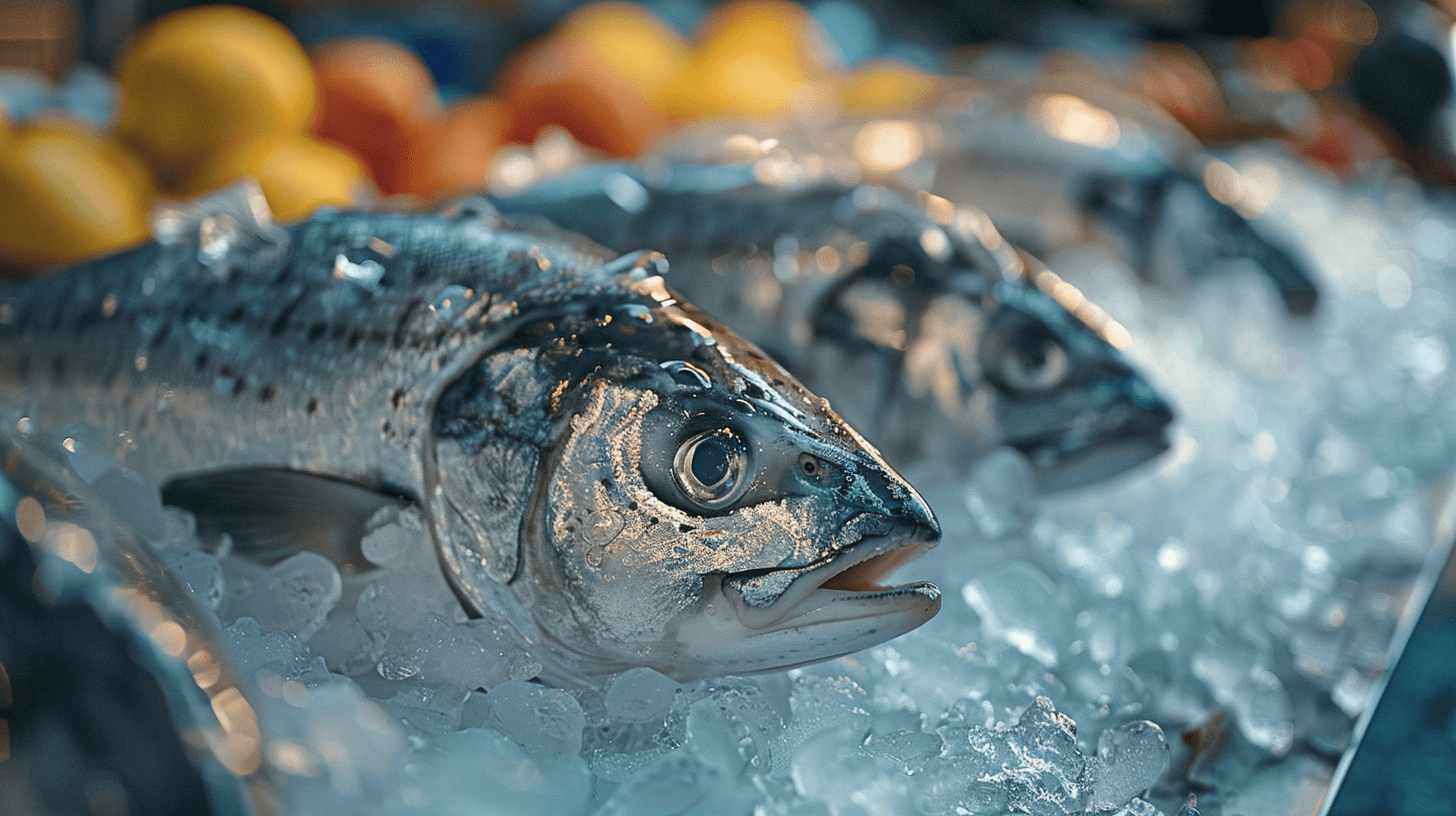
Frozen Fish Direct takes measures to ensure the freshness and nutrient retention of its products:
- Flash-freezing: Fish are frozen at sea, locking in nutrients and freshness.
- Quality checks: Regular quality assessments maintain high standards.
- Delivery: Efficient delivery systems ensure fish remains frozen until it reaches your door.
Signs of Spoilage in Fish

Be aware of these spoilage indicators:
- Texture changes: If the flesh becomes slimy or mushy, it may be spoiled.
- Discoloration: Any unnatural colour changes can indicate spoilage.
- Odour: An off-putting or strong fishy smell is a clear sign the fish is no longer fresh.
Integrating Fish into Your Diet for Heart Health

Incorporating fish into your diet can significantly contribute to overall health and well-being, particularly for those managing hypertension. The omega-3 fatty acids found in fish like salmon, mackerel, and sardines are instrumental in reducing blood pressure and improving cardiovascular function.
Key Dietary Takeaways for Hypertension Management
For individuals seeking to manage hypertension through diet, the key takeaways include:
- Regular Consumption: Aim for at least two servings of omega-3-rich fish per week.
- Balanced Diet: Integrate fish into a balanced diet that includes a variety of nutrient-rich foods.
- Mindful Preparation: Opt for cooking methods that preserve the heart-healthy benefits of fish, such as grilling, baking, or steaming.
Staying Informed on Fish Consumption
To stay informed about the latest research and recommendations on fish consumption:
- Follow Reputable Sources: Keep up with updates from authoritative health organisations like the American Heart Association.
- Consult Healthcare Providers: Engage with healthcare professionals for personalised dietary advice.
Personalised Assistance from Frozen Fish Direct
Frozen Fish Direct can assist customers in their journey toward better heart health by:
- Providing High-Quality Fish: Offering a selection of frozen fish that retains nutritional value.
- Ensuring Accessibility: Making it easier for customers to include fish in their diet, regardless of their proximity to fresh markets.
- Offering Variety: Supplying a wide range of fish options to suit different dietary needs and preferences.





